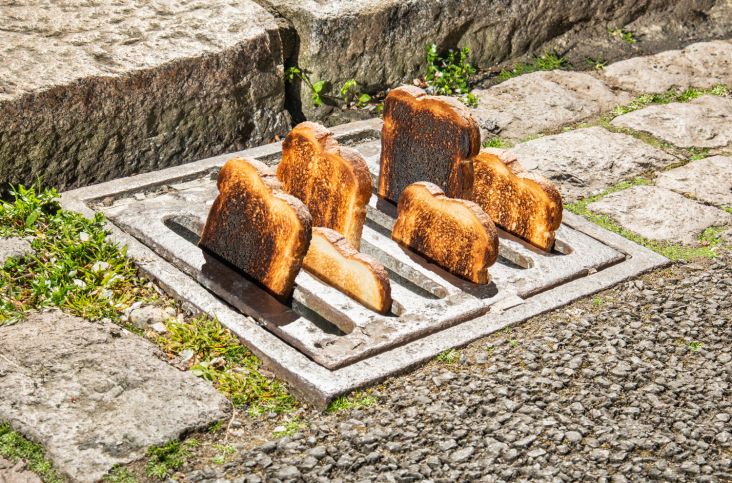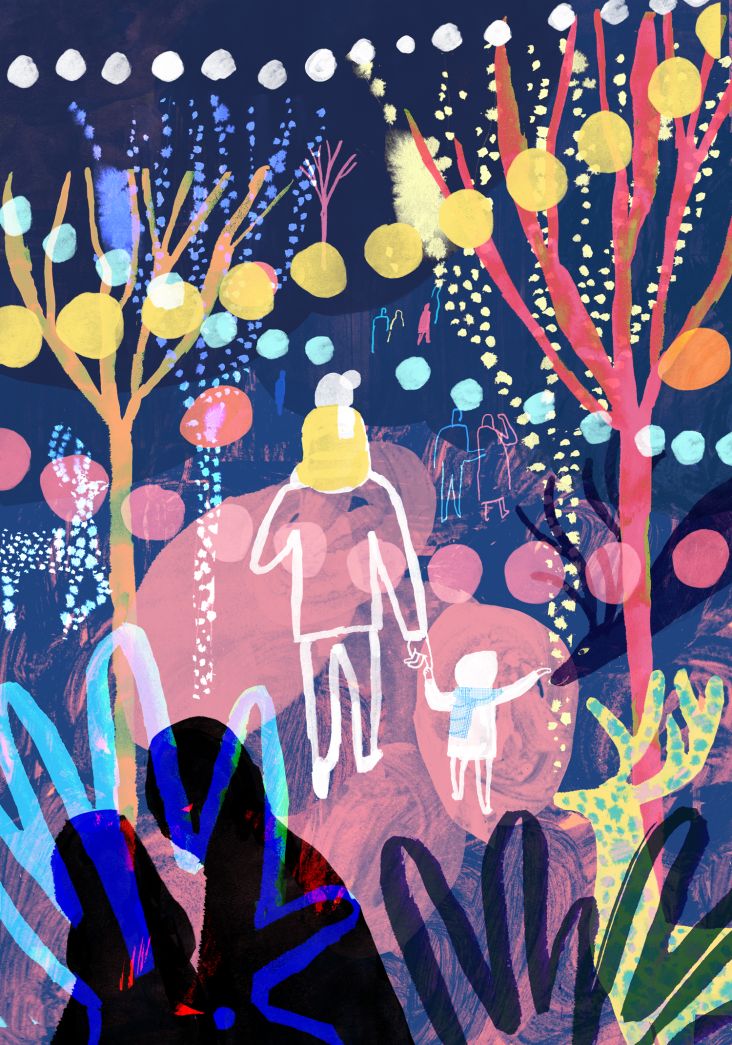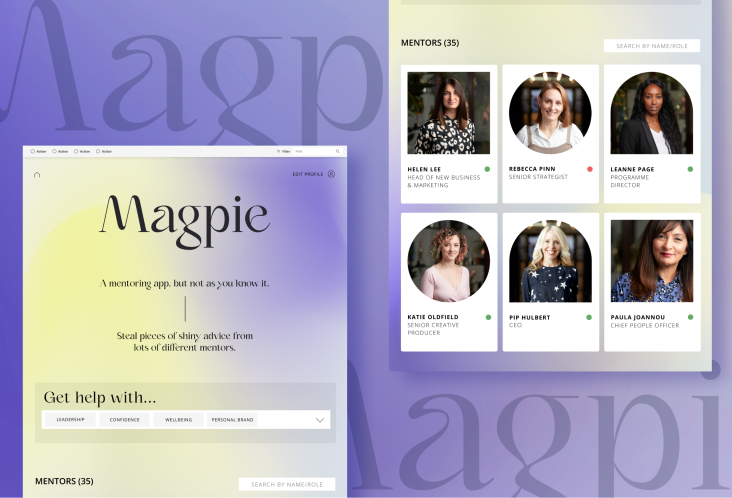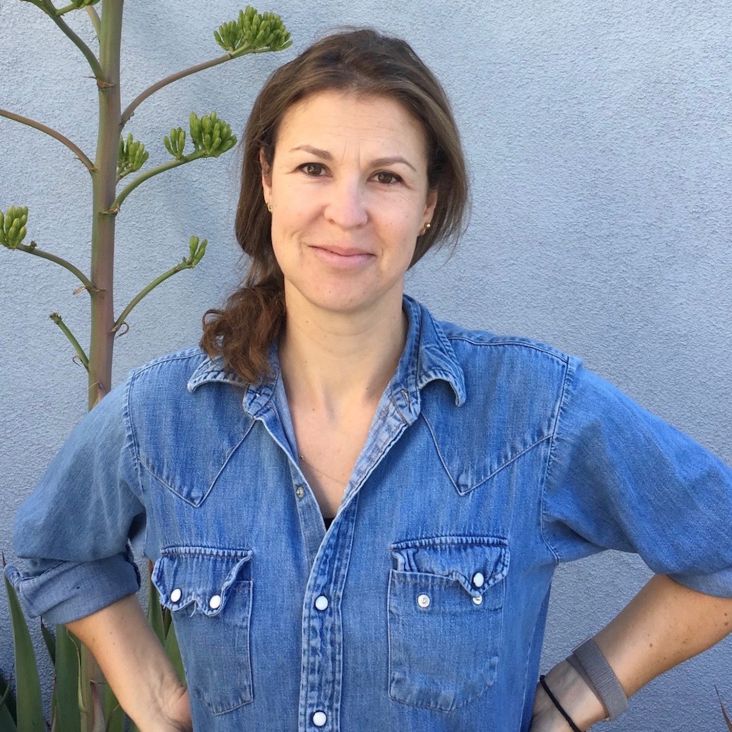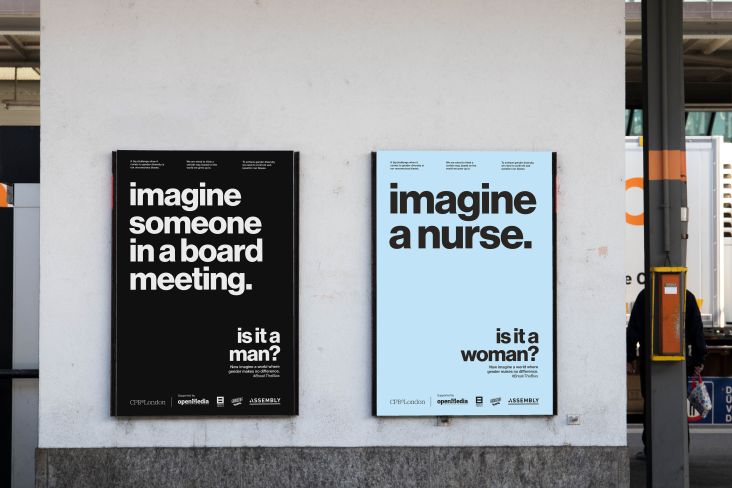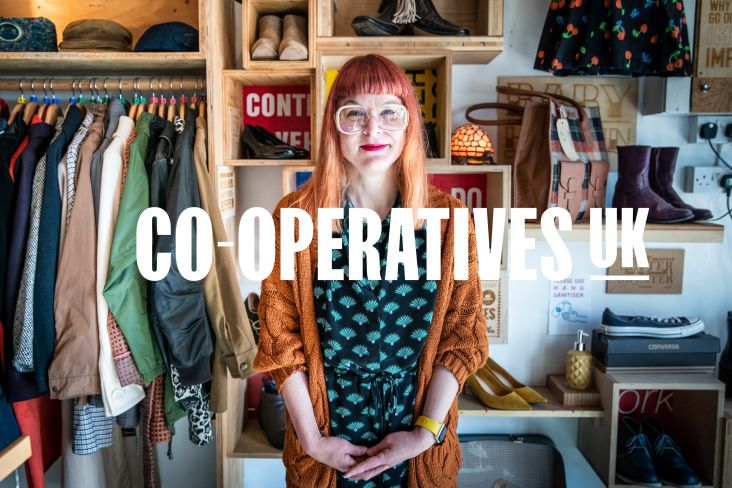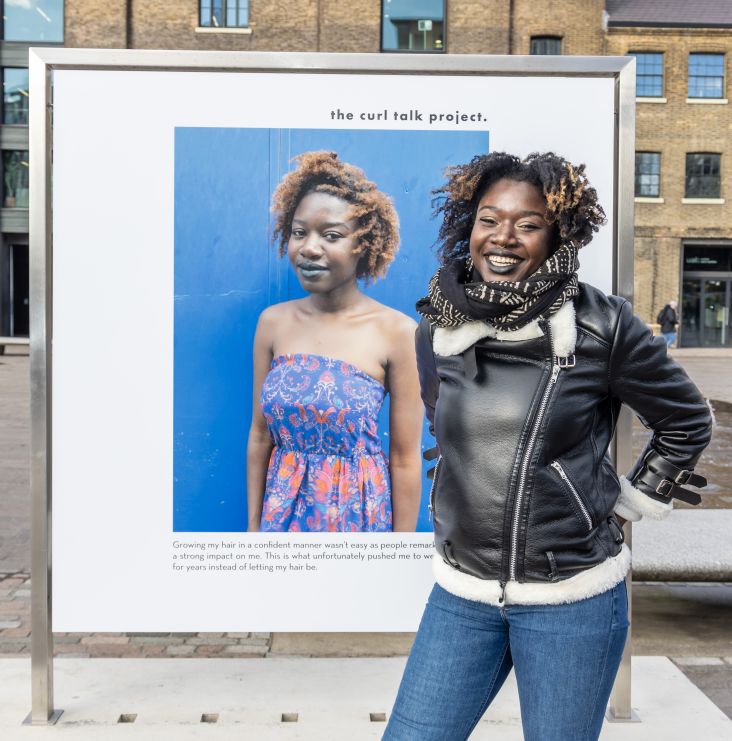Creative leads on the women that inspire them most
While the creative industry is making moves towards gender equality, women remain fairly invisible in modern design history. Articles, books and documentaries about iconic creatives of the past generally focus overwhelmingly on men. But it's not like there aren't great female creatives to talk about too!
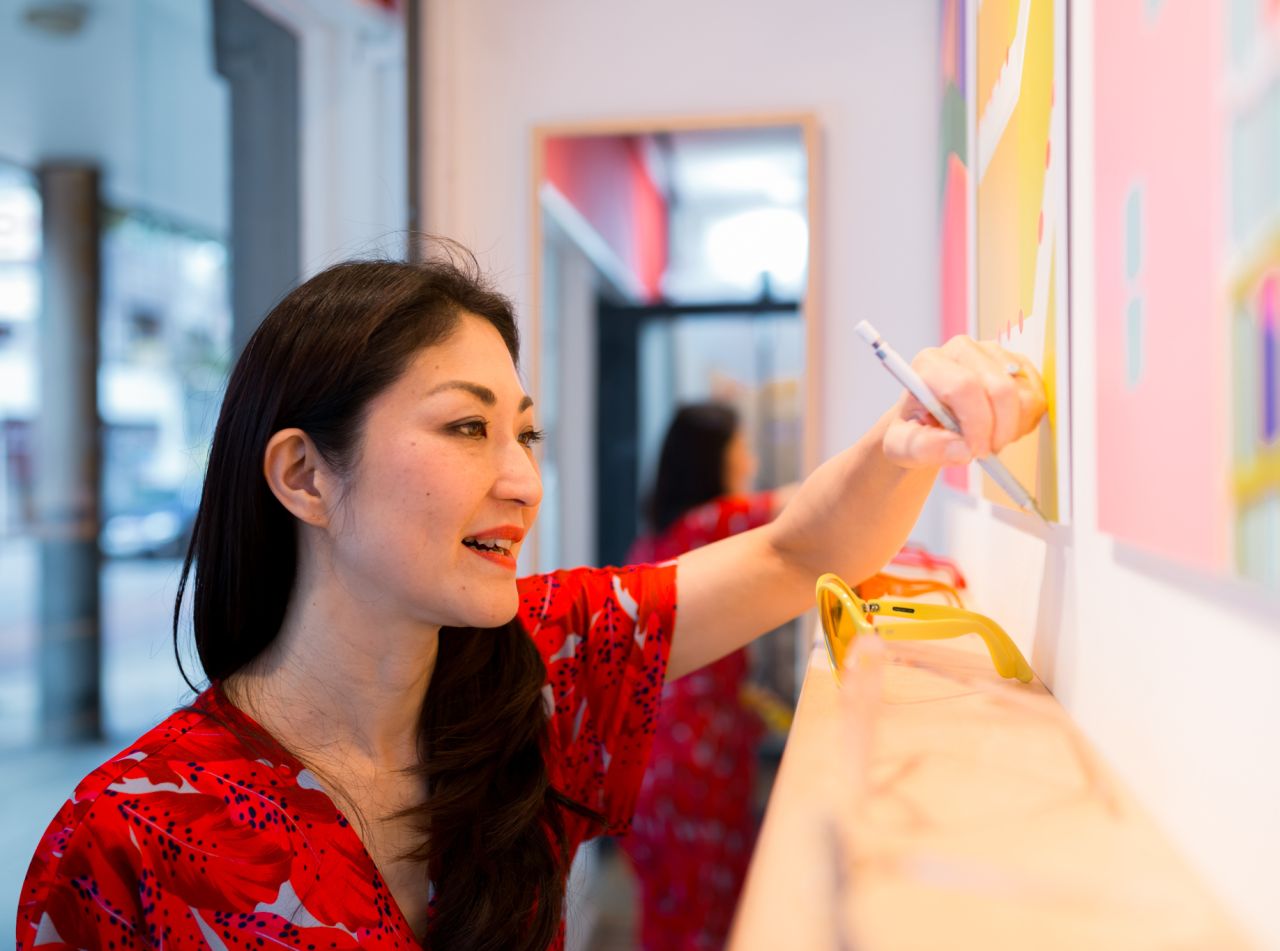
June Mineyama-Smithson. Photography by Elaine Potter
To provide a bit of balance in this regard, we've chatted to some big names across the industry to uncover some unsung heroines who have inspired them during their careers.
Some of these may already be familiar to you, while others you'll be meeting for the first time. But they're all well worth checking out, both as a great source of inspiration for your own creative projects and a reminder of just what great things women in the creative professions are capable of.
1. Maggie Holladay
With a fondness for vintage furniture and classic designs, Maggie Holladay has transitioned from a career in fashion to becoming an interior design guru. With a curatorial eye for striking designs, she is the founder of Claude Home, a host of unique and exclusive pieces by up-and-coming artists well as a home to restored mid-century modern vintage furnishings by well-known designers. As a BIPOC-woman owned business, Maggie is trailblazing a path for representation in the design world.
Her inspiration
As her source of inspiration, Maggie picks her mother, Terry Holladay, a tennis star who represented the United States in the 1976 Wightman Cup. "As clichéd as it sounds, she's always been an inspiration in my eyes," says Maggie. "Since the conception of Claude Home, she has consistently been in my corner to support my vision and be my number one cheerleader.
"Her success as a former professional tennis player turned real estate mogul is what drives and motivates me to fulfil my short- and long-term goals for my brand and myself," Maggie continues. "Growing up, she showed me how important it is to take risks and believe in myself. Having a supportive mother that is passionate about my goals is such a blessing."

Maggie Holladay. Photography by Bobbie Brown
2. Priya Khanchandani
British writer and curator Priya Khanchandani is the head of curatorial at the Design Museum in London. Through exhibitions and text, her work pushes the boundaries of design and uses the material environment as a lens to understand the world in which we live. Currently showing at the Design Museum are Bethany Williams: Alternative Systems and Amy: Beyond the Stage, both curated by her.
The first female editor of design and architecture magazine Icon, Priya, was nominated as Fiona Macpherson New Editor of the Year. After an early career as a lawyer at a magic circle firm, she began her art career at the Victoria and Albert Museum. She has since curated at international forums and published widely on design, including numerous book contributions. She is a regular commentator on design in the national press and broadcast media, including Radio 4's Front Row and BBC Newsnight.
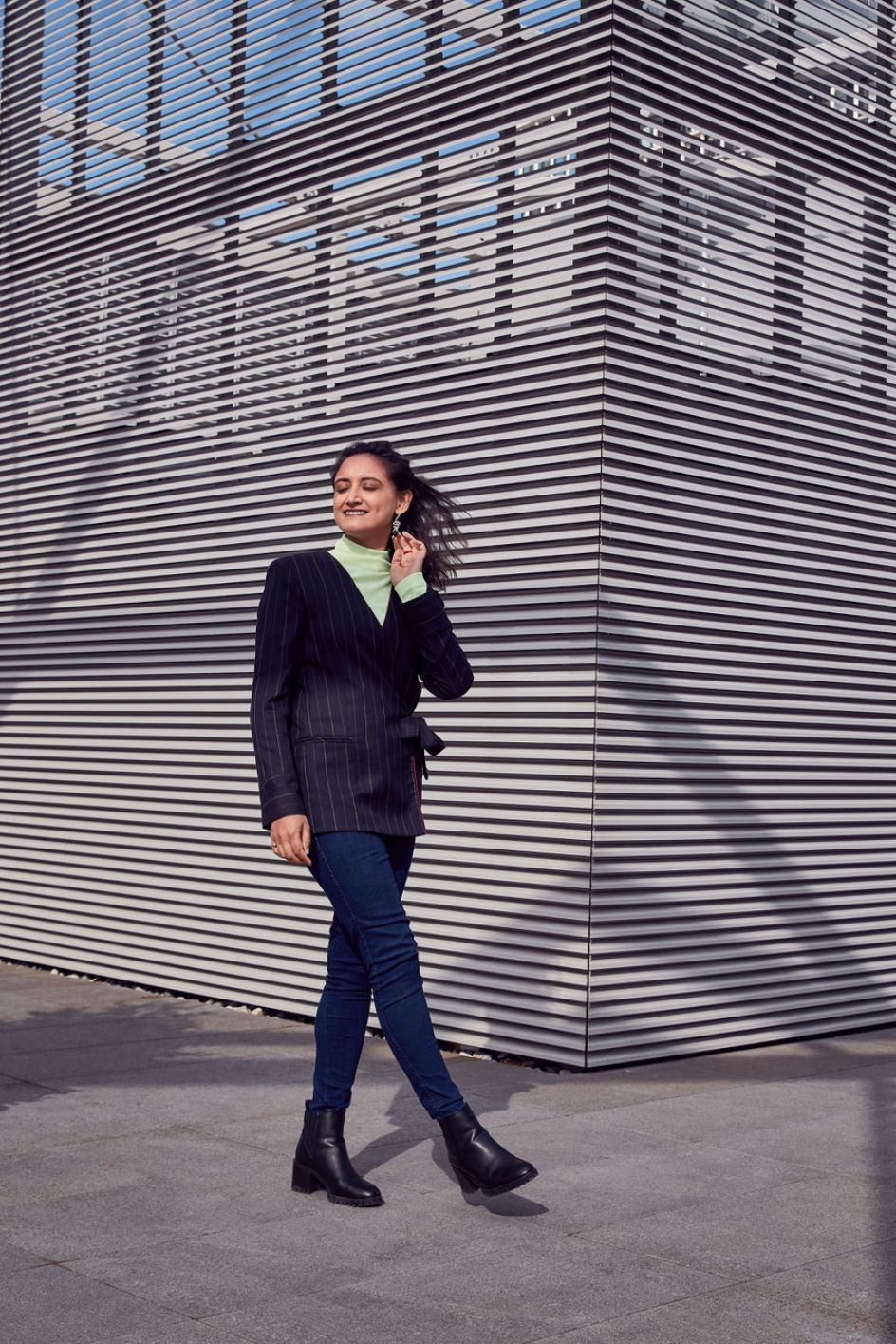
Priya Khanchandani
Priya read modern languages at Cambridge University then received a distinction and the annual dissertation prize in the history of design from the Royal College of Art. She was on the board of Chisenhale Gallery for five years and is now a trustee of The Hepworth Wakefield. An advocate for diversity in the arts, she co-founds the collective Museum Detox.
Her inspiration
Priya finds inspiration in books and is drawn to the work of women who "use words as a tool to unravel intellectual truths that connect with a broad audience," as she puts it. "It's all the more important to pay tribute to writing because it plays such a crucial role in making sure design is part of cultural discourse and is becoming undervalued as an art form in a digital age," she explains.
As such, the American writer Maggie Nelson inspires Priya a lot. "I particularly love The Argonauts, a memoir drawing on cultural theory and philosophy, and Bluets which consists of 240 paragraph-long essays about the colour blue. Nelson's work crosses theory, poetry and memoir, and liberates culture from conventional boundaries: it's simply relatable, no matter how it's described."
"I suppose I'm a polymath, in that I've worked in several different disciplines – across the humanities – and Nelson's approach has helped me see the value in that. Her writing about the (female, male and gender-fluid) body is honest and helped me accept having a body that doesn't 'confirm' after cancer treatment. I also love the way she peppers her writing with references to so many feminist heroes, from Sedwick to Eileen Myles."
"As a young design writer," Priya adds, "I was inspired by the architecture critic Ada Louise Huxtable, who won the first-ever Pulitzer Prize for Criticism in 1970 and made design writing an important part of society for the first time. When I became the first female editor of the architecture and design magazine Icon, I turned to her as an example of a woman who had held her own in the same discipline and admired the way she put social substance above style when analysing architecture."
3. Yuri Suzuki
Yuri Suzuki is a UK-based experience and sound designer who works at the intersection of installation, interaction and product design. He joined Pentagram as a partner in 2018. His work encompasses sound, music, installations, product design, art direction, education and contemporary art for a range of clients worldwide.
His inspiration
Since Yuri first started making music, he has been influenced by female electronic music pioneers, many of whom were featured in the excellent documentary film about the industry's unsung heroines Sisters With Transistors.
"These amazing women include Wendy Carlos, who was the first person to use the early electronic musical instrument (Moog) to create orchestration and was heavily involved in its development," he says. "There's Delia Derbyshire and Daphne Oram, who both worked at the BBC Radiophonic workshop even before the concept of electronic music even existed (there were no synthesisers or drum machines at the time).
"Derbyshire was a genius who used a tape machine to sample music and is famous for her electronic arrangement of the Dr Who Theme. She also worked with Peter Zinovieff to create the first consumer synthesisers in the UK. Oram was a different generation but had a completely different vision – she created electronic musical instruments without a keyboard, using drawing to create sound to play on her 'Oramics'. Another inspiring female musician is Doris Norton, who worked closely with computer giants Apple and IBM to expand the possibility of creating electronic music with computers."
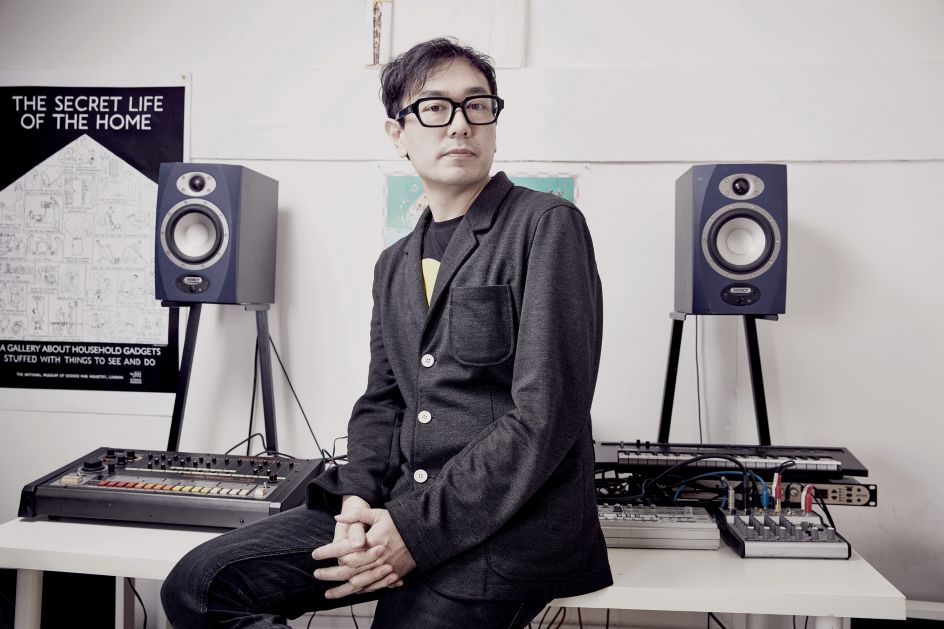
Yuri Suzuki. Photography by Mark Cocksedge
Of course, Yuri admits there are "so many female geniuses (past and present) in the world of electronic music", but there is not enough space to mention them all here. "My work has been hugely influenced by what they achieved," he adds. "They all created something unique that people had never heard before. They have left an incredible legacy, but it's their creativity and curiosity which inspired me to think about how I could create something new and forward-looking."
Looking at recent personal developments, Yuri says: "My partner and I recently had a baby girl – she loves it when I play electronic music for her. It makes her incredibly happy when I play Laurie Anderson's 'O Superman', and she has already started trying to play music on her toy keyboard. I'll definitely be introducing her to these electronic music pioneers who achieved so much at the time but continue to be an inspiration to us all."
4. June Mineyama-Smithson
MAMIMU, aka June Mineyama-Smithson, is a Japanese artist and graphic designer who's on a mission to inject optimism into the world. With a passion for colours and shapes since her childhood in Tokyo, she loves uncovering delights from everyday life and turning them into bold, joyful patterns. And she now shares her experience through being a lecturer at the London College of Communication.
"Believing in the optimistic idea that inspiration can be found everywhere, I'm always on the look for hidden delights in everyday landscapes and interpret the joy of discovery in my design," June explains. "I am also inspired by the postmodern idea of remixing existing elements to create a new context."
Her inspiration
June's inspiration is the 80-year-old Japanese fashion designer Rei Kawakubo, the founder of Comme des Garçons and Dover Street Market. "She is almost as old as my late mother, but her creativity shows no sign of stopping," enthuses June.
"When I was working in the branding industry as a young designer, I always wondered, where have all the female designers gone?" June recalls. "I never saw creative women in their 50s and up. So we need more women like Rei Kawakubo. She's a great role model, showing us that there is no age limit for creativity. She motivates me to keep going until I'm 80 and beyond so that I can motivate younger women to do the same."

June Mineyama-Smithson. Photography by Rebecca Sigrist
5. Joy Nazzari
A Brazilian-American who has lived in London for 21 years, Joy Nazzari translated her passion for cities and culture into the central theme of dn&co – a creative studio she co-founded in 2006 specialising in culture and place branding. Working in cities from London to San Francisco to Kuala Lumpur and with a range of cultural institutions including the V&A, dn&co is a 56% female business and is now 100% employee-owned.
Her inspiration
"I was privileged to have inspiring women in my family growing up," Joy tells Creative Boom. "A mother that worked at top international branding consultancies, a grandmother with a PHD from Yale, and another with a Masters in Art at Berkeley. At the same time, the men in my family gave me great perspective through my teenage years when being a 6'1" girl, taller than all the boys, could potentially undermine my confidence early.
"More recently, I'm looking up to powerful female thinkers I've met like Dr Margaret Heffernan, writer of Wilful Blindness and Women on Top, the latter highlighting that women-run companies are more likely to stay in business than the average US firm. I'm passionate about solving problems through creative strategy and design, but really, good business is my muse."

Joy Nazzari. Photography by Alisa Connan
6. Tiffany Howell
In 2016, designer Tiffany Howell co-founded Night Palm, a full-service LA-based interior design agency, to bring life to her visions of soulful and inspirational spaces for her clients. She draws from many creative sources beyond the design and architectural world to craft cosy, sexy, and playful visual narratives that juxtapose romance with rock and roll.
Her inspiration
Tiffany's first inspiration is Madeleine Castaing, a celebrated interior designer and French antique dealer who lived from 1894 to 1992. "She has always been a muse of mine," says Tiffany. "She was an imaginative, eccentric, and theatrical interior designer, with a style of her own and a confident wild nature.
"Madeleine Castaing was true of herself and her vision," she adds, "never caring about others' views of her free-spiritedness. She was a staunch supporter of the arts and developed artists and muse relationships that one could only dream of by befriending the likes of Pablo Picasso and Jean Cocteau. She likened her designs to creating portraits. Madeleine put her heart, soul, and emotions into her clients' designs, frequently living with her clients for 24 hours to position herself inside their heads."
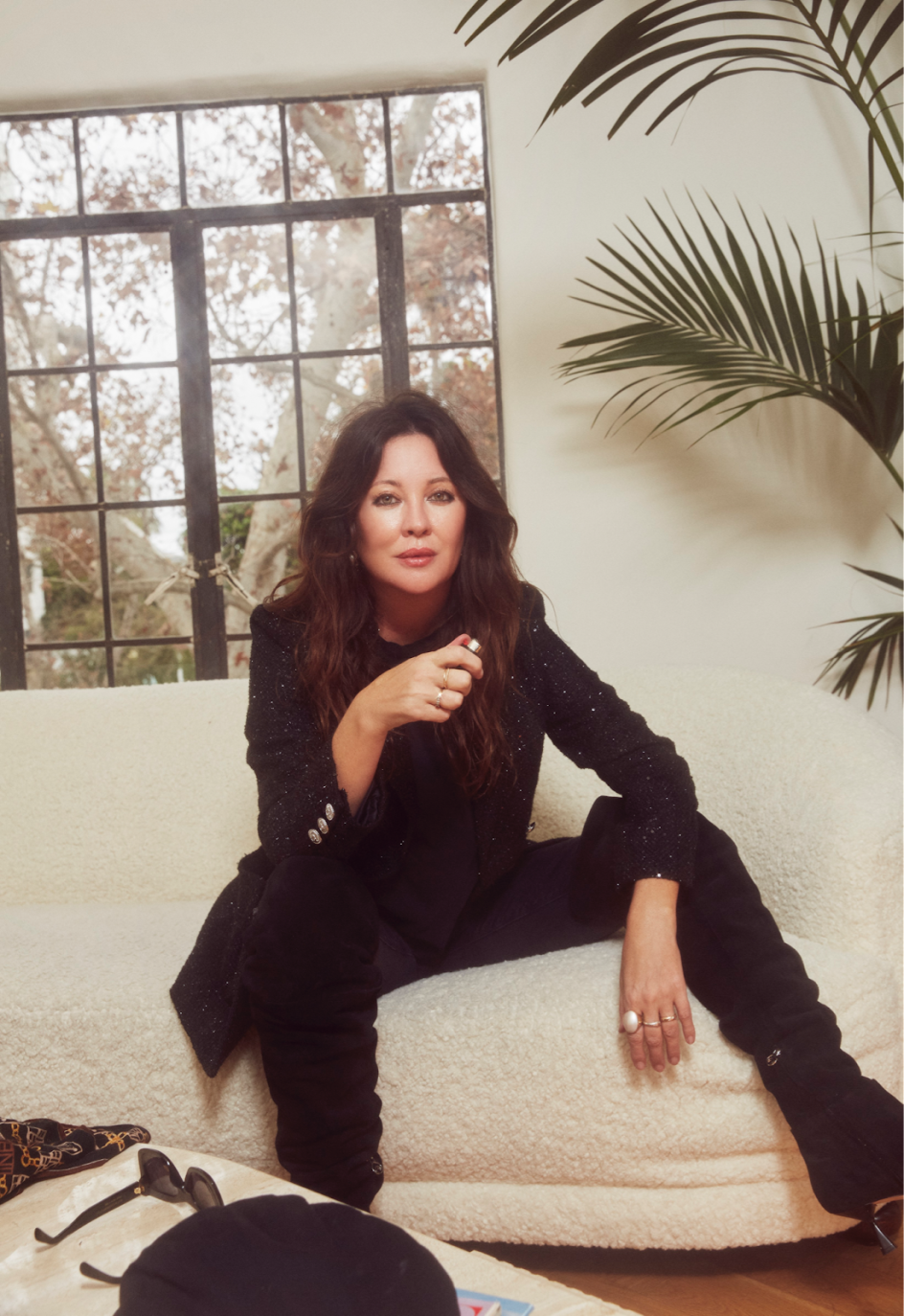
Tiffany Howell. Photography by Heather Gildroy
Another female creative that inspires Tiffany is Mary Oliver, an American poet who lived from 1935 to 2019 and won the National Book Award and the Pulitzer Prize. "I always say that poetry is my medicine," says Tiffany. "The words of Mary Oliver have guided me on so many emotional journeys, often finding the way back to myself.
"As a passionate writer, Mary has a unique and romantic take on the simple manifestations like how a flower blooming can become a powerful reminder of the fragility of life. Or the act of taking notice and how a simple visual can often make the heart soar. Her words resonate deeply within my soul and empower my creative visions. I often use her poetry as a foundational element when curating my mood boards for clients as I truly want them to understand the emotions and feelings that I've created in their space."
7. Simonida Pavicevic
Simonida Pavicevic is the co-founder and curator of the international contemporary art gallery HOFA Gallery (House of Fine Art). Simonida was surrounded by art from a young age. Growing up in Switzerland, her love for art was nurtured by her family of artists and art educators. Simonida knew that she wanted to immerse herself in the art world for as long as she could remember. She graduated from a reputable Switzerland Art school but never claimed to be an artist herself. Her focus has been on the discovery of incredible art and supporting artists.
For several years Simonida has worked as an art advisor for prestigious companies and private clients, specialising in building high net worth collections and providing guidance on investments. With a great eye and years of experience in the industry, her main objectives have been to introduce clients to artworks by leading contemporary artists and facilitate conversations around art, and help materialise the artists' vision.
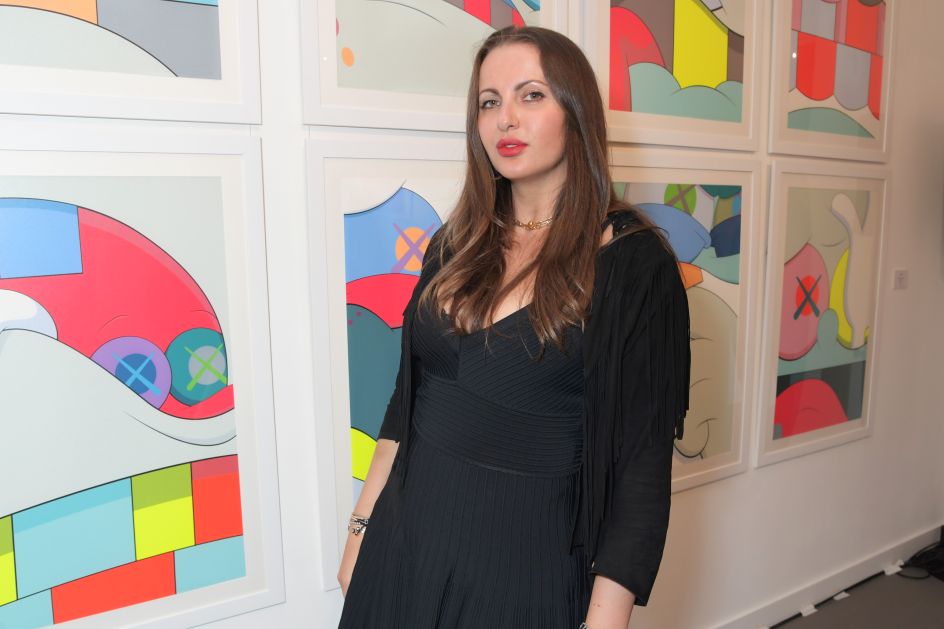
Simonida Pavicevic
In 2013, Simonida and Elio D'Anna joined forces to open the first HOFA Gallery headquarters in London. HOFA Gallery focuses on reaching new audiences and expanding awareness through contemporary art. An avid art collector herself, Simonida has worked tirelessly to connect with collectors worldwide and provide great artists with a platform to exhibit their work. HOFA Gallery has since grown extensively and established new locations in Los Angeles and Mykonos.
Her inspiration
Having grown up surrounded by creativity and a family who loves art, Simonida believes she is very lucky. She pitches her aunty as being her biggest female inspiration. "She was an art university teacher and an exceptionally talented artist," she explains. "She taught me to follow my passions and encouraged me to create my own works. Her achievements gave me the strength to follow my passion and succeed as a woman in such a male-dominated environment.
"My aunt also taught me how women artists have been involved in the making of art throughout history, although their work and creativity, when compared to that of their male counterparts, has been often obfuscated, overlooked and undervalued. At that moment, I realised my true calling in the art world. To create a place where every artist would be given the same opportunity. Where talent and merit would be the only driving forces. HOFA Gallery was created with this intent, as a place for acceptance and equality."
8. Claire Robertshaw
As Executive Creative Director at Design Bridge in London, Claire Robertshaw is a core part of the senior leadership team. Responsible for the creative output and management of the UK studio, Claire also leads the relationships with some of its key clients such as Reckitt and Unilever, a strong partnership that Design Bridge has been growing for over 25 years.
Passionate about creative freedom and empowerment and proud of the gender equality she has helped to establish within the agency, Claire regularly contributes to industry discussions and events focused on mentoring women in creative leadership.
Her inspiration
Michelle Kennedy, the founder of Peanut, is one of Claire's biggest inspirations. The platform offers a safe space for women to meet and find support during a similar stage in life – from fertility, pregnancy, and motherhood to menopause. "From her insight of being a new mum and the loneliness she experienced, Michelle created the Peanut app as a platform for other mothers to find community, and its simple branding and visual language has inspired many a mood board," Claire says. "I admire the brand's mission to drive positive change and break barriers for women."
Claire uses the recent campaign Renaming Revolution as an example, which challenges the "outdated and damaging terminology women can experience throughout fertility and motherhood". She adds: "The brand is now tackling the taboos around menopause, establishing Peanut as the app for women of all life stages."

Claire Robertshaw
Elsewhere, Claire admires Jessica Walsh, the New York-based award-winning art director, designer, illustrator and founder of &Walsh, who continues to be an inspirational creative and outspoken feminist. "Walsh is a big believer in the power of mentoring and started Ladies, Wine & Design, the global nonprofit initiative to encourage women to work together rather than competing in 2016," Claire says. "It now has chapters in 250 cities worldwide to help drive change through mentorship circles, portfolio reviews, talks and creative meetups. I have worked with the London chapter many times, and it is always a joy. Her social commentary on IG is timely, bold and irreverent as well as visually brilliant."
Another inspiration is Aline Santos, who has a character and influence as big as her title: Chief Brand Officer and Chief Equity Diversity & Inclusion Officer at Unilever. "She is kind, warm, people focussed and relentless in her pursuit of purpose and improvement," Claire says. "Aline is a force for good. She radiates positivity, adores creativity and is a joy to work with. Through her 30 year career at Unilever, her passion for equality, diversity, and purpose are inspirational and affect change through the people we see in our ads and the attitudes and vision of brands. I would work with her every day!"
9. Maja Radosavljević
Maja Radosavljević is a creative strategist at The Frameworks. She joined the team on the day that lockdown began in 2020 and brought with her a fresh perspective to the London design studio. Armed with a degree in English Literature from Warwick University and a brain that taps into both left and right hemispheres, she's passionate about joining the dots between strategy and design to create more meaningful experiences. Since becoming a "Frameworker", she has been instrumental in shaping the studio's strategic direction in areas as diverse as contact centre software, reinsurance and digital transformation services.
Her inspiration
Although Maja draws inspiration from many women, from Elif Shafak and AOC through to Ellen Ripley, someone she keeps coming back to is Georgia O'Keeffe. "The more I learn, the more amazed I am," she says. "Georgia was quite simply, the coolest. An independent spirit and a bold innovator. A fearless trailblazer. A visionary. Who else would have ventured out into the desert alone in a customised Model-A Ford cum mobile studio? Let alone a woman – in the 1930s – who had only just learned to drive. Always confident and comfortable in her own company, her style – in both fashion and interiors – is still considered chic today. She may have died nearly 40 years ago, but her legacy is still alive. And I am here for it."

Maja Radosavljević
10. Maya Zupano
Maya Zupano is a Slovenian-British filmmaker and creative director, currently working as Associate Creative Director at London ad agency, Impero. Inspired by the British and American cinema of the 1970s and "everyday trivial pursuits", she grew up in Ljubljana and has since worked in Berlin, Beijing, New York, and London.
Her inspiration
Maya says her mother was her first inspiration. "She instilled fierce and creative confidence in me by allowing me to truly be myself and support all of my unconventional and creative endeavours. And there were a few," she tells Creative Boom.
Elsewhere, Maya says women on the big screen influenced her creative path at a young age. "I have early memories of watching Sophia Coppola's Virgin Suicides in the cinema. I believe this was the point when I knew I wanted to make things for the screen. To make people feel how I felt at that moment.

Maya Zupano
"Nowadays, we have modern-day writing icons like Phoebe Waller-Bridge. Her insights into the female condition and the multifaceted female characters she has created have opened the door to a refreshed female narrative on screen. In many ways, Lena Dunham scratched the surface of that with Girls," she says. "Weirdly enough, I also really enjoyed TV commercials back in the '90s. I remember recreating them at home for fun. I think this was my first step towards creative direction and storytelling."
She adds: "Last but not least, I'd like to mention Jane Goodall, who was an education on those who can't speak for themselves but deserve a voice."
11. Johanna Drewe
Johanna Drewe is creative director and partner at Output, a brand and digital design studio in London. Challenging traditional design thinking, she creates powerful brand experiences that reach deep into digital products. A natural mentor, Johanna inspires her team to stretch their creative thinking while balancing audience needs. She shares her experience as a guest lecturer at UCL and London Met.
Her inspiration
While redefining Pottermore, the online home of Harry Potter, Johanna worked with a team of influential clients and collaborators: Susan Jurevics, Henri Stuart-Reckling, Eleanor McBrien and Anna Rafferty. "It was an important time in my career, and suddenly I was working with these kickass, inspirational women."

Johanna Drewe
Of the group, it's Anna Rafferty who made the biggest impression, as Johanna continued to work with her at the BBC. “She has an amazing job as Vice President at LEGO Group, but still has time to be a Trustee and Interim Chair for The Women's Prize Trust and sit on several boards. As well as being brilliant at her job, she commands respect, speaks with authority and confidence but has time, energy and consideration for those around her."
It's not just Anna's ability to focus attention on so many different areas that most inspires Johanna, but the help she gives other women. "I once heard her talking to a more junior team member, who was explaining her involvement in a recent project. Anna said she wasn't representing herself strongly enough – the project had been an amazing feat, and she had to own the room more. It was awesome to see that level of mentoring and respect for someone else in such a natural way."
12. Loribelle Spirovski
Loribelle Spirovski is a trained painter and artist living and working in Sydney, Australia. Since graduating from the University of South Wales in 2012, Spirovski has been recognised for her accomplishments in art and portraiture, including being a 2017 finalist for Australia's Archibald Prize. In 2022, the artist was also a finalist for the prestigious Blake Prize and the Naked and Nude Art Prize. She also played a central part in the important installation work in Germany's Potsdamer Platz, where one of her pieces was installed on a monumental scale.
Her inspiration
The artist Paula Rego is one of Loribelle's biggest inspirations. "Her work deals with a lot of themes that are very particular to the feminine experience," she tells Creative Boom. "My own personal history relates very strongly to the stories she tells through her works. My mother has also been a huge inspiration. Many of the female characters that I portray in my work are based on her, in particular, my experience during our time living together in the Philippines.
"My mother was the quintessential woman to me growing up, she was obviously the epitome of grace and elegance, and I would often simply watch her, modelling my own behaviour and attitudes on hers. Aesthetically I believe her energy has informed my creative decisions, particularly in relation to female subjects."
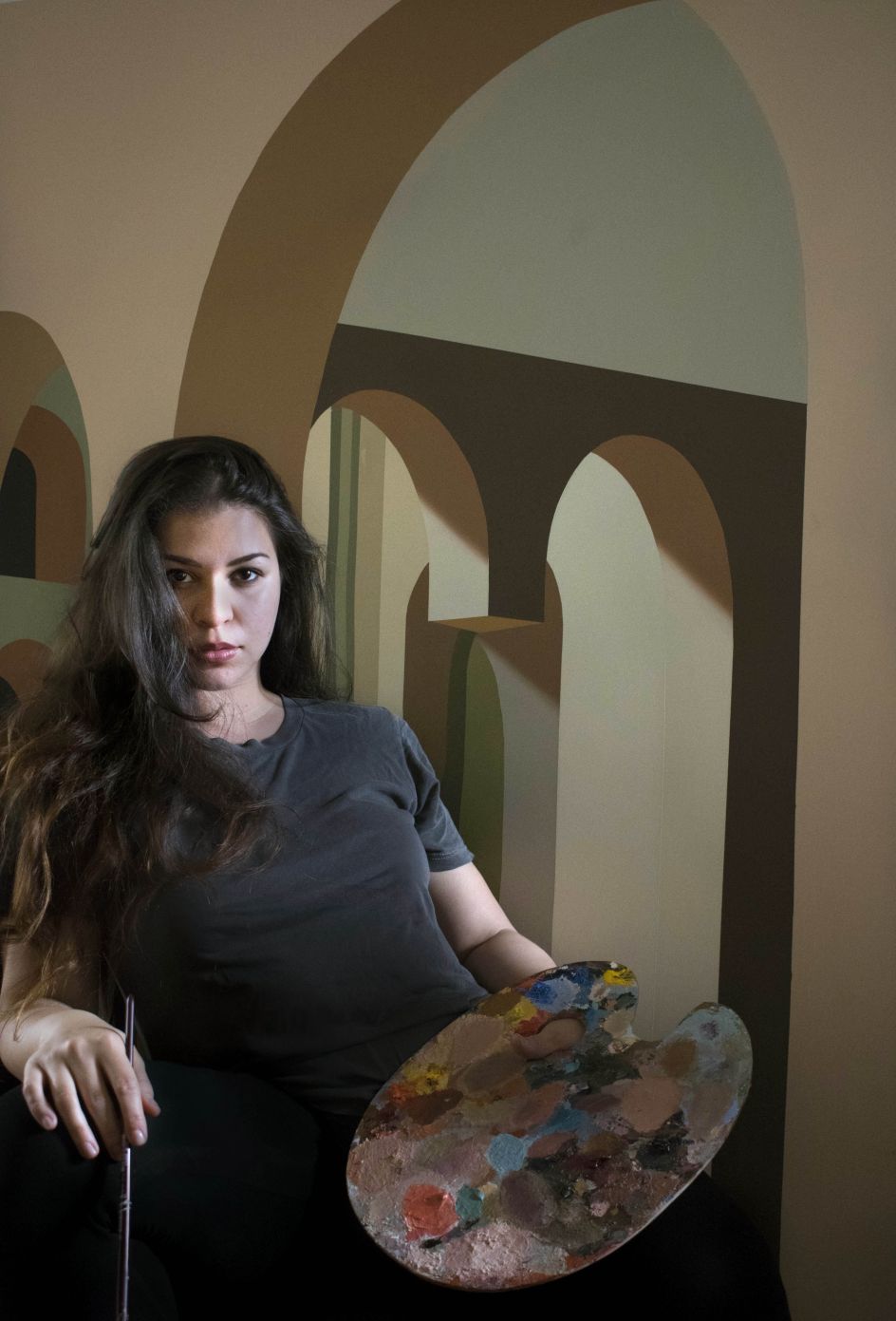
Loribelle Spirovski
13. Ilhwa Kim
Ilhwa Kim creates works composed of tens of thousands of seed units. Each one has a combination of straight lines and circles, which compose a tiny single universe. The materials are created personally for every single universe. The Korean artist dyes each sheet of paper by hand with thousands of different colours, cutting and rolling the layers of paper to make them rigid. It gives Ilhwa an emotional bonding to every single universe. Not a single universe has the same shape, look or colour in her work.
Her inspiration
Louis Bourgeois is Ilhwa's inspiration, as she always reminds her of one question: how can she organise a tool to weave her own story as part of women's history? "Her best tangible works address very fundamental traumas and sadness in her life," Ilhwa tells us. "She chose her sculpture material to resist the things she was struggling against. She made her materials ugly and applied dramatic transformation into the work of universal memory.
"Whenever I see her works, I do not see her thoughts, but our own memory of struggle as women. I question myself. Do I create a culture not fading away but ceaselessly coming back? Or am I adding another decorating piece to the wall? That is why I stick to my tactile paper sculpture, which does not attract the artist's view but generates tactile dialogue between you as a woman and the tangible surface of my piece. My work tries to make the fabric of memory."

Ilhwa Kim
14. Mary Ronayne
Irish painter Mary Ronayne uses comedy, wit, and fun in her work, using farcical elements like melting faces and candy pop colours to create celebrations of the fluidity of time, identity, and life. Juxtaposed with scenes drawn from historical narratives and classical literature, it affirms the enduring elements of humanity in the carefree spirit fans have come to love about her work.
Her inspiration
Women happen to be a frequent theme in Mary's work. "I've painted marriages and family portraits that are charged with questions regarding conventions and expectations concerning women through the traditional roles of wife and mother," she tells Creative Boom. "I frequently recreate well-known family portraits altering the female gaze. Now the mother figure often looks on with a determined stoicism suggesting defiance to the societal conventions of the day, a look that perhaps suggests that she should not be defined exclusively by these roles. Conversely, the paintings set in contemporary settings are often exclusively about women socialising, holidaying and generally, having fun."

Mary Ronayne




 by Tüpokompanii](https://www.creativeboom.com/upload/articles/58/58684538770fb5b428dc1882f7a732f153500153_732.jpg)


 using <a href="https://www.ohnotype.co/fonts/obviously" target="_blank">Obviously</a> by Oh No Type Co., Art Director, Brand & Creative—Spotify](https://www.creativeboom.com/upload/articles/6e/6ed31eddc26fa563f213fc76d6993dab9231ffe4_732.jpg)








